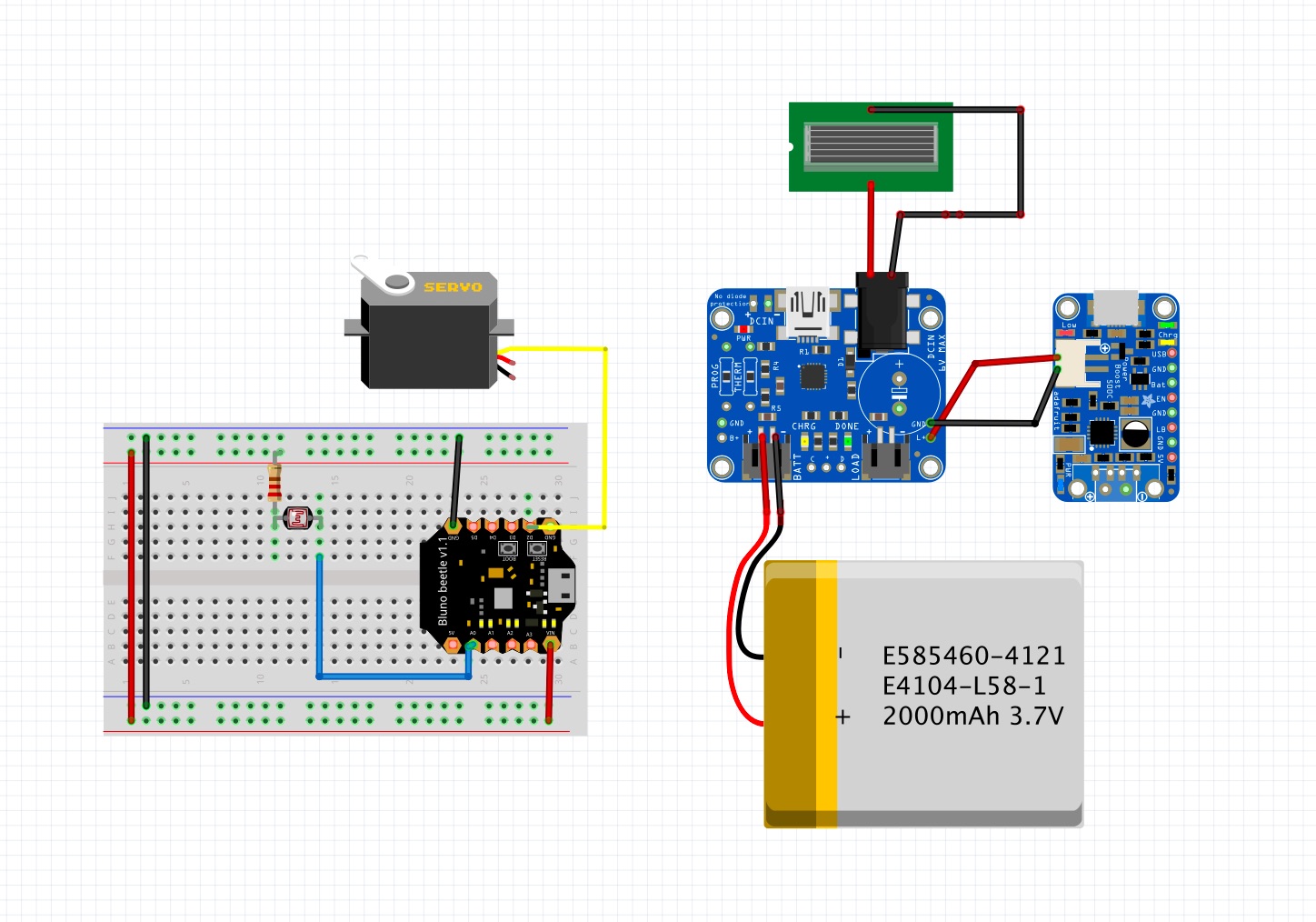Solarbloom
07 May 2021 - Jake Sherwood
 Solarbloom
Solarbloom
Solarbloom
My final project for Energy class is Solarbloom - a solar-powered kinetic sculpture.
Inspired by the movement of Japanese paper fans, my previous kinetic flower work, and my mom’s unique glass art, I wanted to create another kinetic sculpture but with a different mechanism.
Mechanism
That different mechanism ended up being one of the most challenging parts of the project.
As soon as I decided on basing the movement on a spin to open, I thought, can I even figure this out?
Many days thinking and researching other mechanisms; I settled on what I call the sequenced tab. I’m sure this has been done before, but I did not find an example precisely like this in my research.
I started with sketching and trying to figure out how to make it spin.
 sketch flower open
sketch flower open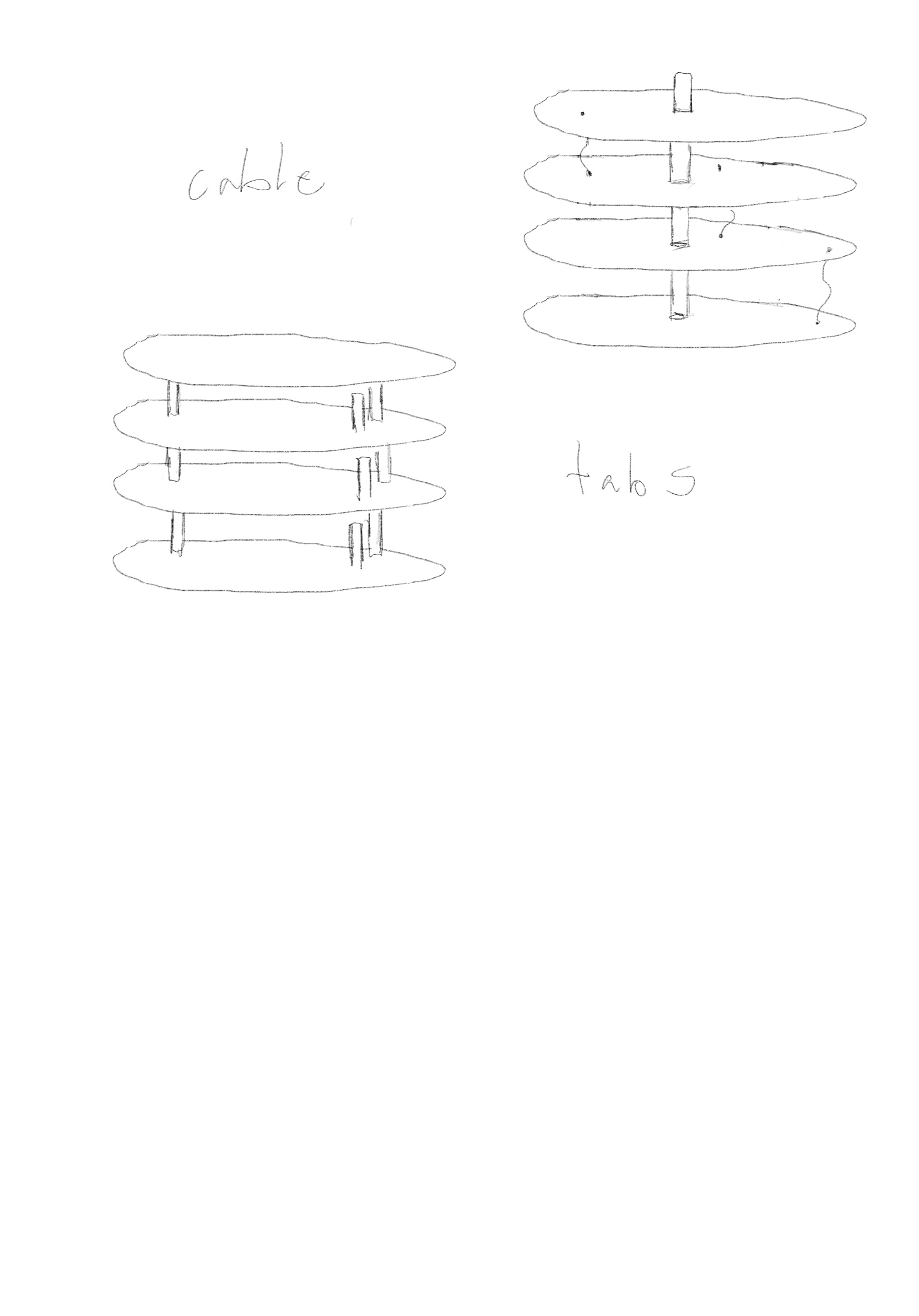 sketch tabs and wires
sketch tabs and wires
I then figured I needed to get some prototype going ASAP to see if it was possible.
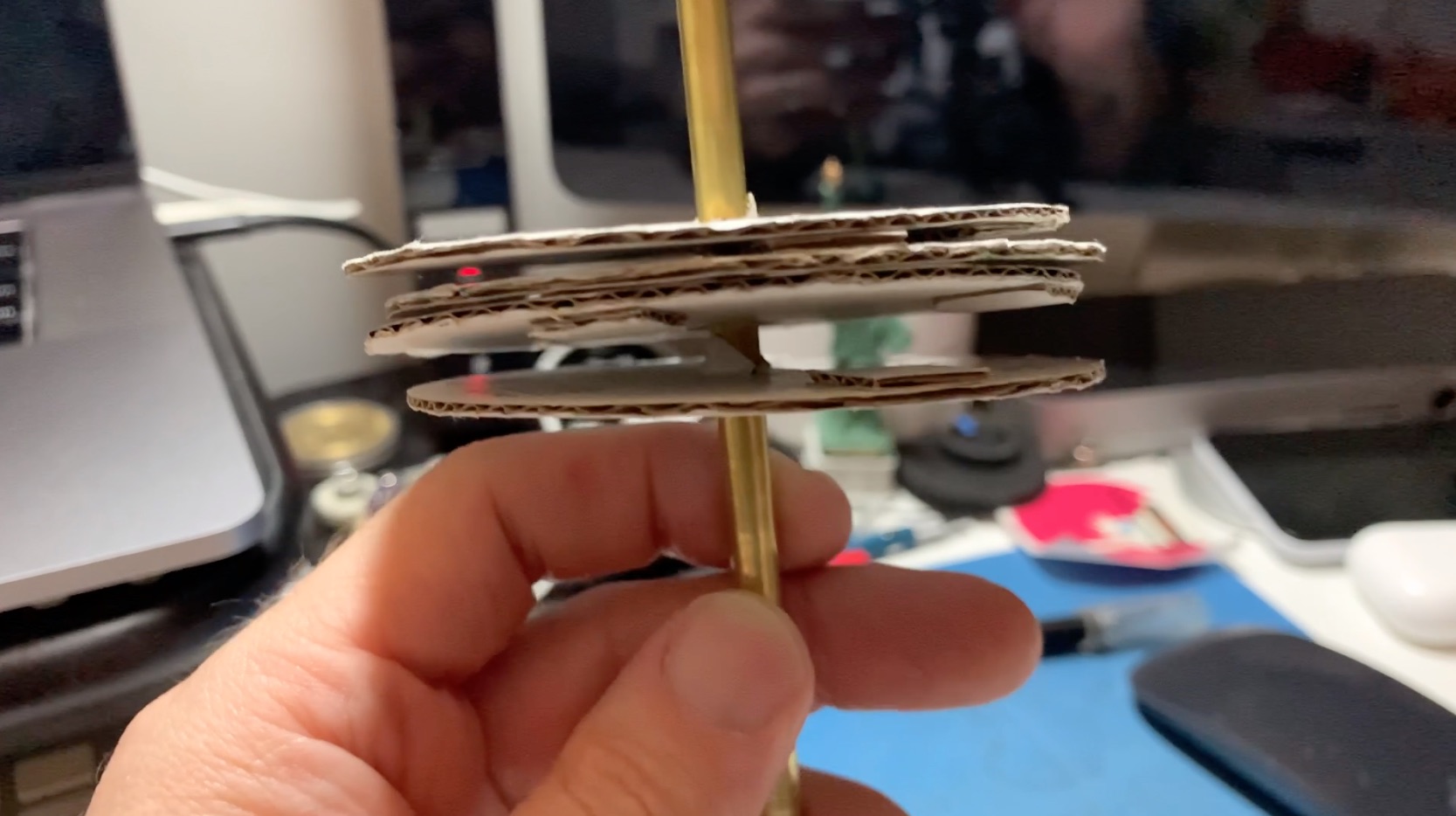 paper proto v1
paper proto v1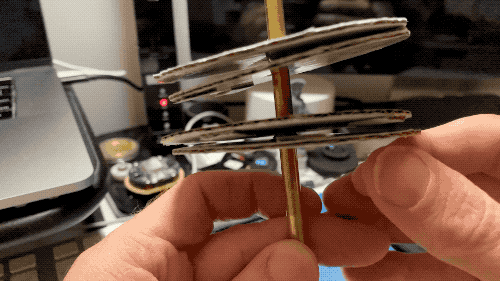 paper proto v1 gif
paper proto v1 gif
Once I had that, I was relatively confident that a mechanism like this could work. But weight and exactly how to fabricate it were still a question.
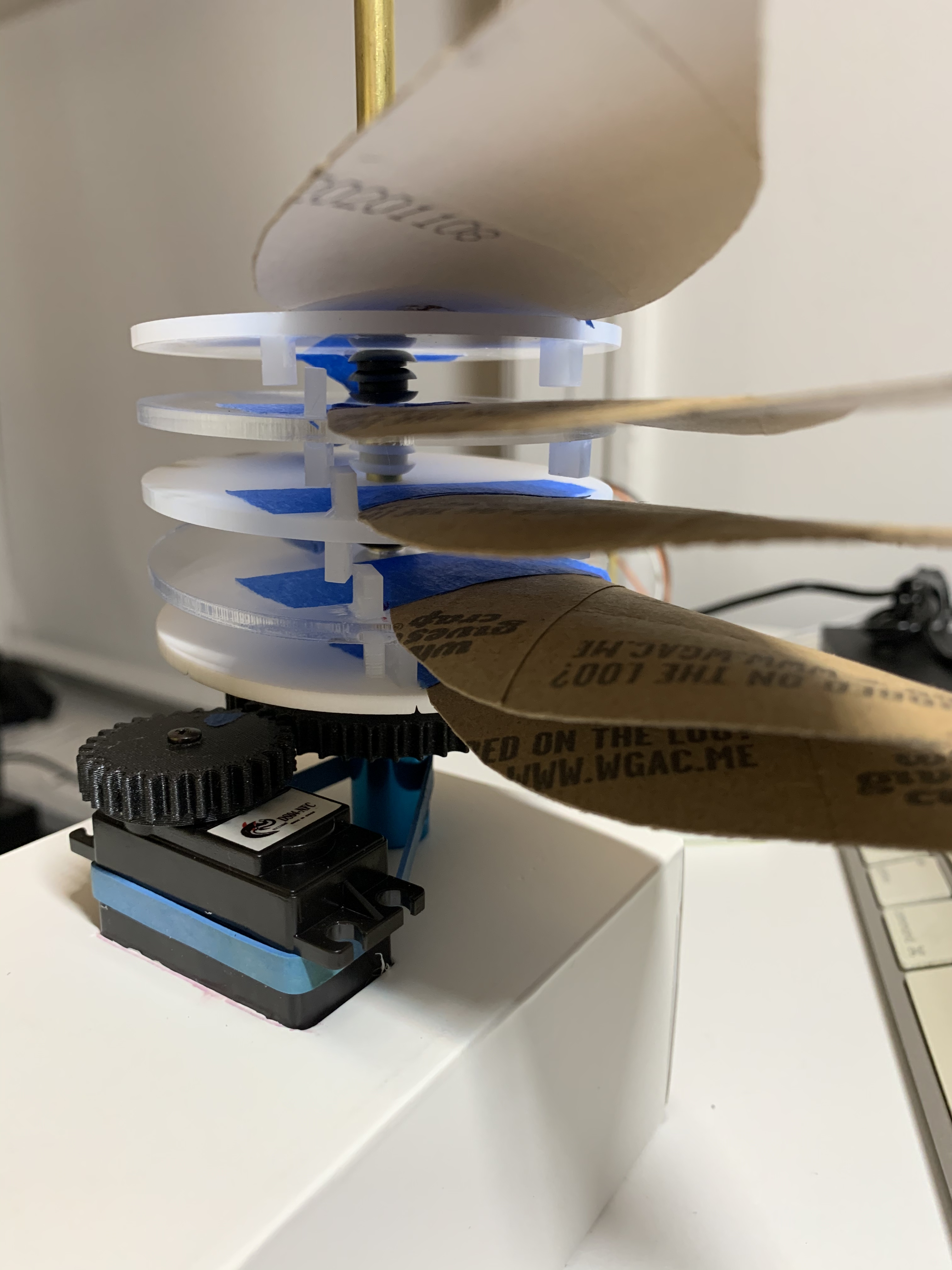 proto v2
proto v2 proto v2 side gif
proto v2 side gif proto v2 top gif
proto v2 top gif
This prototype proved that the mechanism could work, and the support discs and tabs glued together could be a usable fabrication method.
But could I move the weight without breaking glass???
I ended up building this mostly IRL before I got into CAD, but I needed some help figuring out the tab placement and turned to CAD for that help. Then I got sidetracked with building an exploded version and some animations.
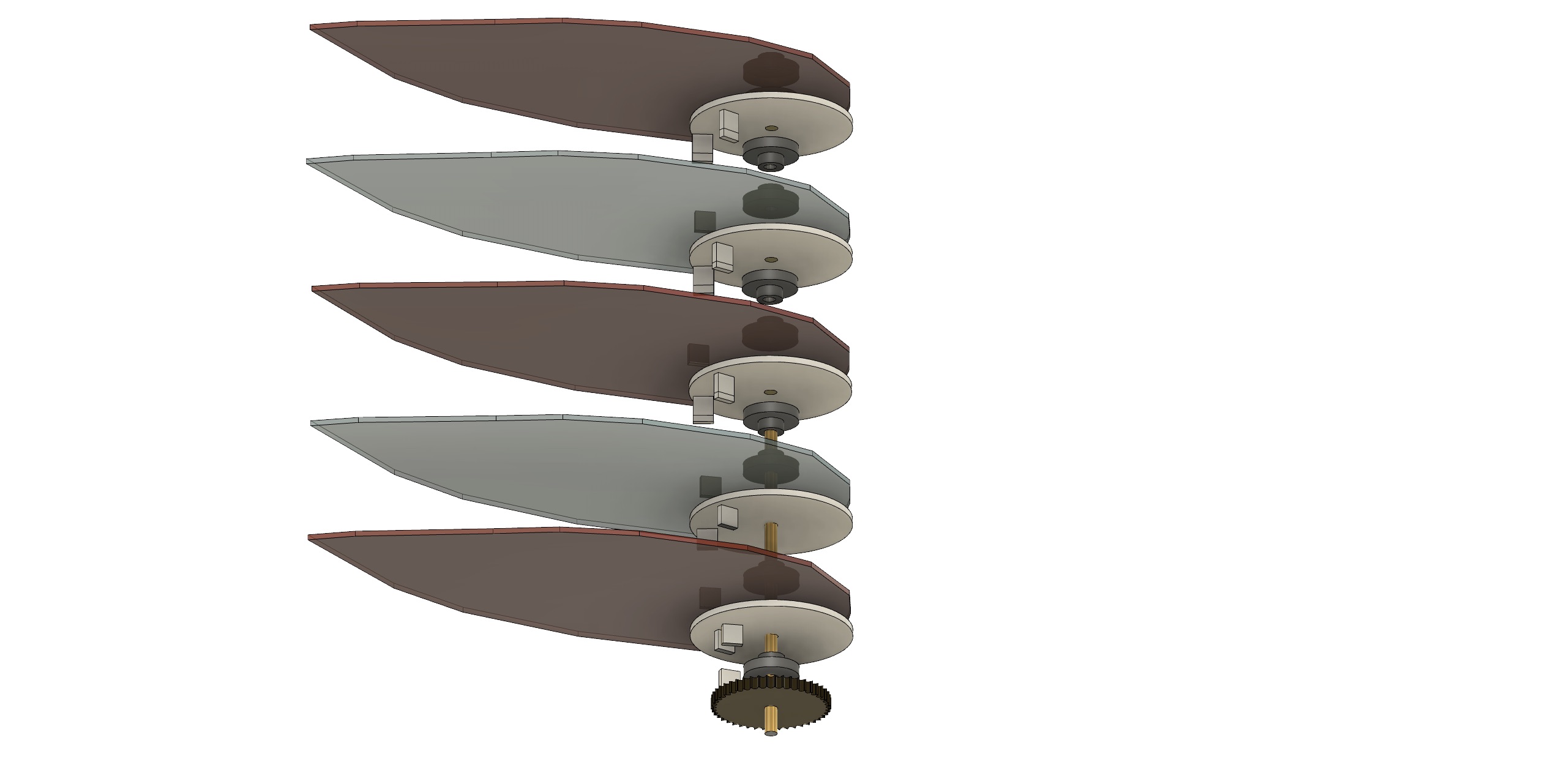 proto v3 exploded
proto v3 exploded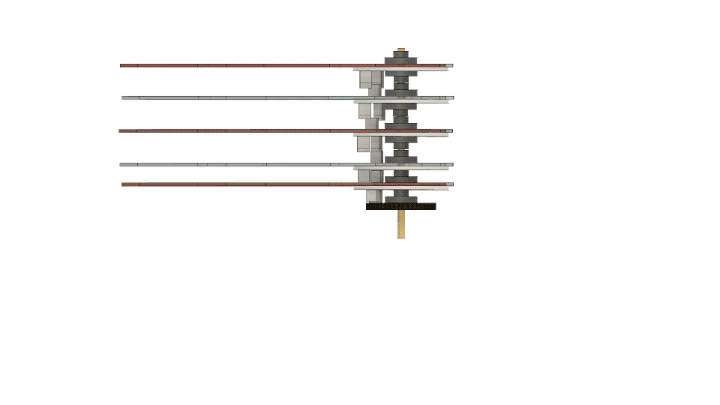 proto v3 lateral open gif
proto v3 lateral open gif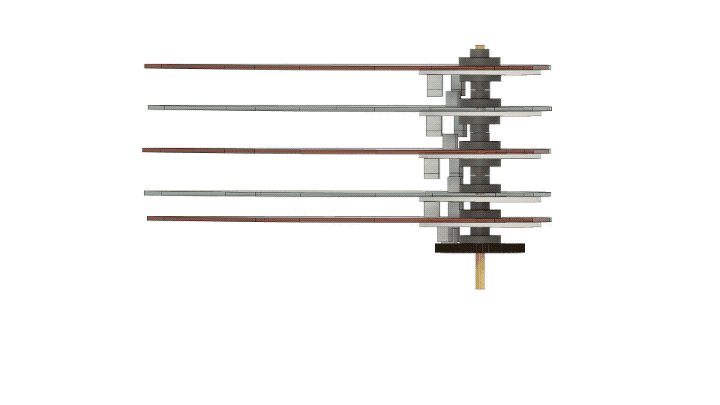 proto v3 top open gif
proto v3 top open gif
Fabrication
The fabrication, aside from the glass petals, was pretty straightforward. I used 4x4 wood for the base and the bottom of the flower assembly. It allowed for weight and a rigid structure.
I laser cut the support discs, tabs, and the wooden flower pot cover, as well as the leaf for the solar panel. The panel pressure fit into laser cut holes in the leaf. I 3D printed gears modeled in Vectorworks and the servo motor mount downloaded from Thingiverse.
The discs and tabs adhered to the glass petals and various combinations of shaft couplers and rubber grommets were used to space them out to account for the variance of the glass surface.
A brass rod was used as the central shaft for the petals to rotate around.
 flower motor assembly base
flower motor assembly base flower pot base 4x4
flower pot base 4x4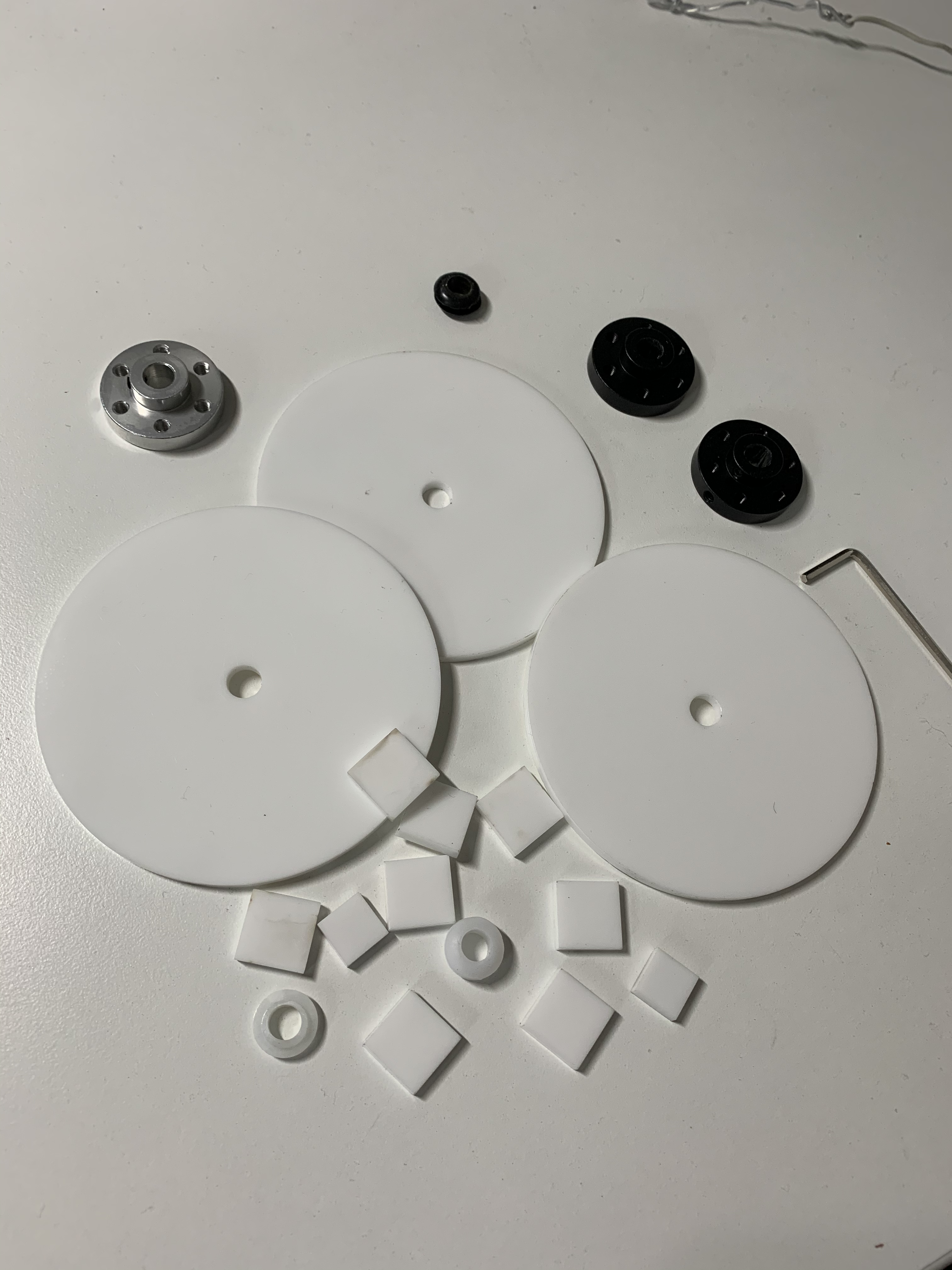 laser cut discs and tabs
laser cut discs and tabs
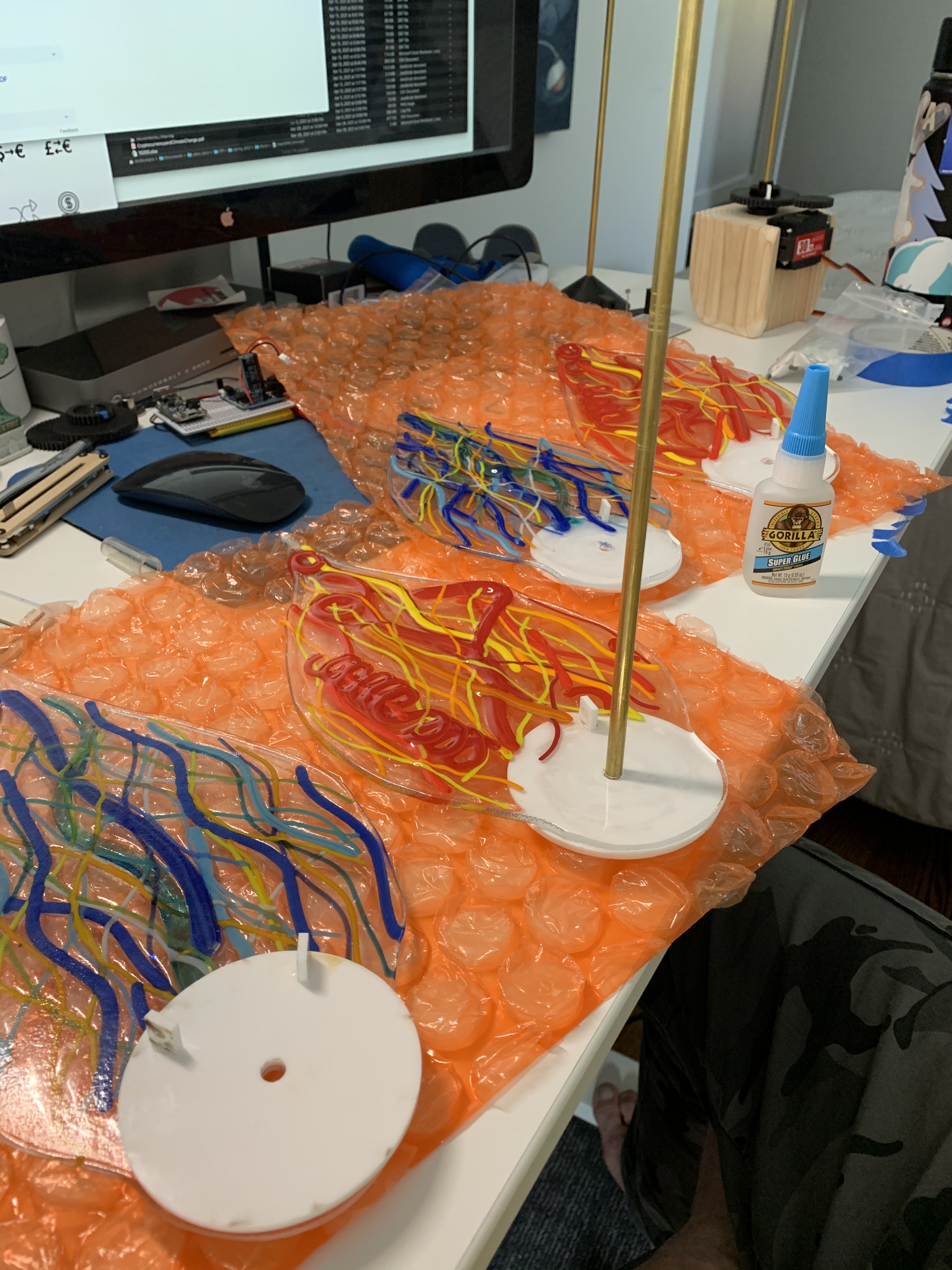 petal assembly
petal assembly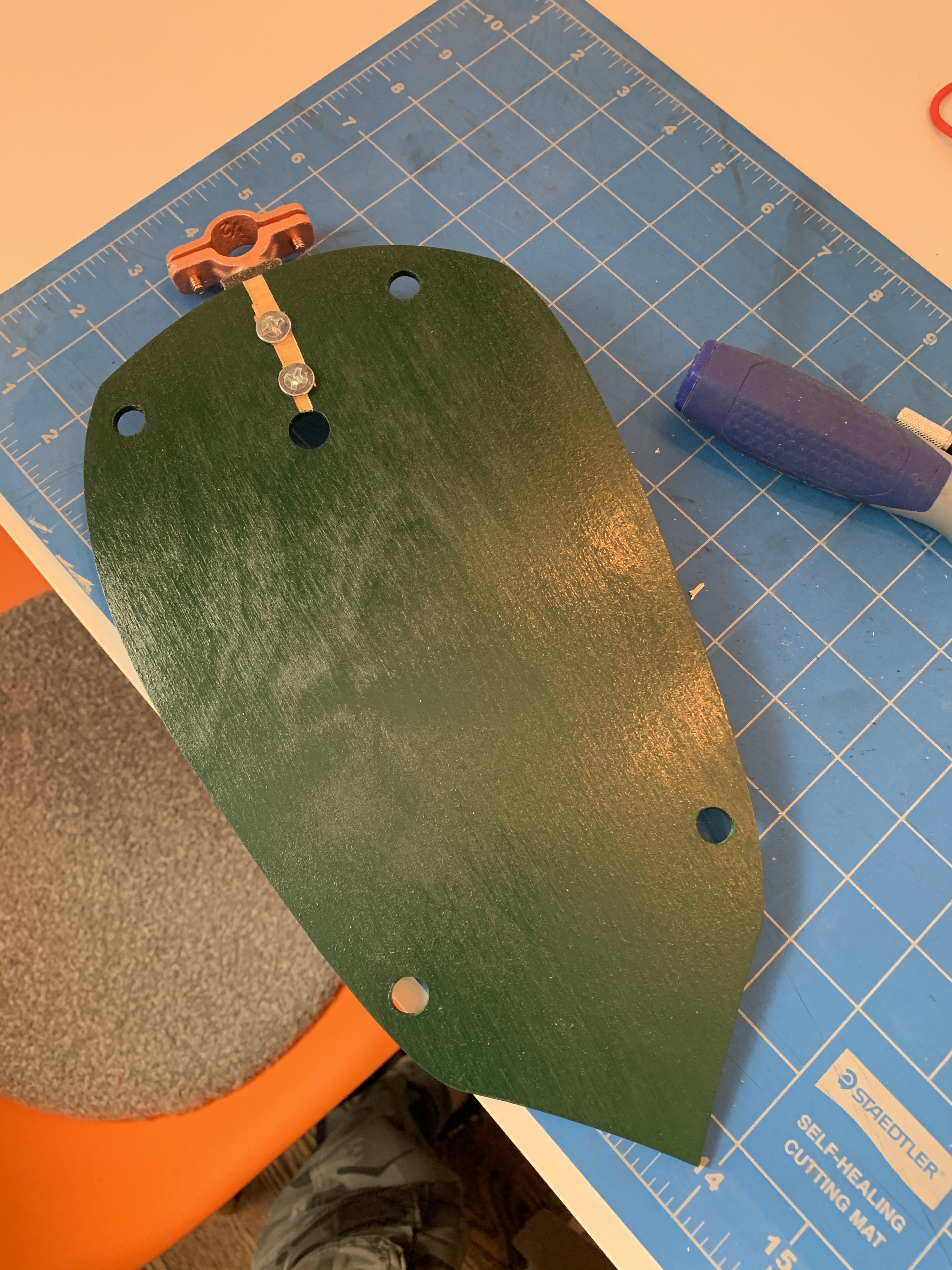 leaf w/ bracket
leaf w/ bracket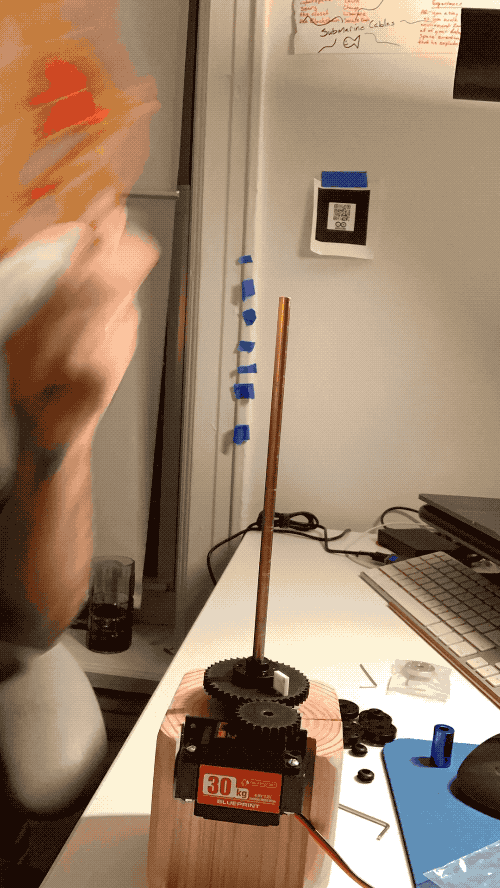 petal assembly gif
petal assembly gif
The stem was a copper pipe with all wiring run internally, which was its own challenge.
Solar
Originally wanting to build my own panel with SunPower cells, I ended up moving to a adafruit panel as it simplified the circuit and power requirements.
I still plan to build out the SunPower panel, but the low voltage, high amperage greatly complicated the circuit as well as sourcing parts.
The adafruit solar panel is spec’d at 6V 3.5W.
Part of the project was to attempt to make the circuit as efficient as possible. I ended up using the Adafruit Sleepydog library, which, combined with my DFRobot Beetle board, allowed my standby amperage to be as low as 0mA. However, it was a bit higher when the circuit was fully put together.
My readings show about 7 mA / hour in standby and 35mA / hour in standby with light check mode—a combined 504 mAh a day. Which with my 2500 mAh battery should last about 5 days on a full charge.
Per the formulas on the Voltaic site, it will take about 1.37 hours to charge in optimum conditions fully; real-world took closer to 3.
I did learn a valuable lesson, always check the polarity of lipo batteries. I had an old battery that apparently had the JST cable reversed, and I ended up frying my charge controller. A new controller and battery fixed the problem.
Code
Overall the code is relatively simple. Using the 360º servo, I did need to work out the logic for my desired rotation. I basically do a pseudo-PWM and just increment the movement by 1 until I reach my chosen degree. Then send a stop signal.
The other tidbit is the snooze function. I found out the hard way that using the Beetle board, which has no reset button, it’s very easy to get stuck in a deep, deep sleep. I entered sleep mode and was unable to escape and load another sketch. I finally found that there is a reset short, which also proved challenging because my board was already soldered to a proto board. I luckily could snake a wire through a hole and complete the short reset.
Finding that also led me to a better way of just setting a delay initially to allow for loading a program before it starts the sleep sequence.
Code is here on Github
Circuit
The main circuit consists of the Beetle MC, a photo-resistor to check for light, and the servo. The solar circuit has a charge controller, charge booster, panel, and lipo battery.
Result
Solarbloom - an efficient solar powered kinetic sculpture, collab with @marysherwoodartglass
Overall I’m happy with the result. Figuring out the mechanism and having it actually work was the highlight of this project. Ultimately, this is a prototype for additional projects I hope to collaborate on with my mom.
Solarbloom
Bill of Materials
Photo Gallery
 IMG_5323
IMG_5323 IMG_5338
IMG_5338 IMG_5339
IMG_5339 IMG_5340
IMG_5340 IMG_5341
IMG_5341 IMG_5376
IMG_5376 IMG_5377
IMG_5377 IMG_5378
IMG_5378 IMG_5379
IMG_5379 IMG_5380
IMG_5380 assembled_charging
assembled_charging chargecntrlr_charging
chargecntrlr_charging chargecntrlr_charging2
chargecntrlr_charging2 close_up
close_up flower_closed_exploded
flower_closed_exploded flower_w_wires_sketch
flower_w_wires_sketch laser_discs_tabs
laser_discs_tabs leaf_bracket
leaf_bracket leaf_bracket2
leaf_bracket2 leaf_bracket3
leaf_bracket3 orig_flowr_sketches
orig_flowr_sketches painting_parts
painting_parts petal_assembly
petal_assembly pot_access
pot_access pot_access2
pot_access2 pot_wire_mgmt
pot_wire_mgmt pot_wire_mgmt2
pot_wire_mgmt2 prefinal_assembly
prefinal_assembly protoboard_w_beetle
protoboard_w_beetle protoboard_w_chargecntrlr
protoboard_w_chargecntrlr protoboard_w_chargecntrlr2
protoboard_w_chargecntrlr2 protoboard_w_chargecntrlr_battery
protoboard_w_chargecntrlr_battery side_view
side_view solarbloom_circuit
solarbloom_circuit solarbloom_hdr
solarbloom_hdr solarbloom_side
solarbloom_side solarbloom_side2
solarbloom_side2 solarbloom_side_closeup
solarbloom_side_closeup solarbloom_top
solarbloom_top solarbloom_top2
solarbloom_top2 solarbloom_top_closeup
solarbloom_top_closeup tabs_v1
tabs_v1 tabs_v2
tabs_v2 tabs_wires_sketch
tabs_wires_sketch top_view3
top_view3 wiring_holes
wiring_holes wiring_holes2
wiring_holes2 wiring_holes3
wiring_holes3 wiring_holes4
wiring_holes4 wiring_panel_plug
wiring_panel_plug
